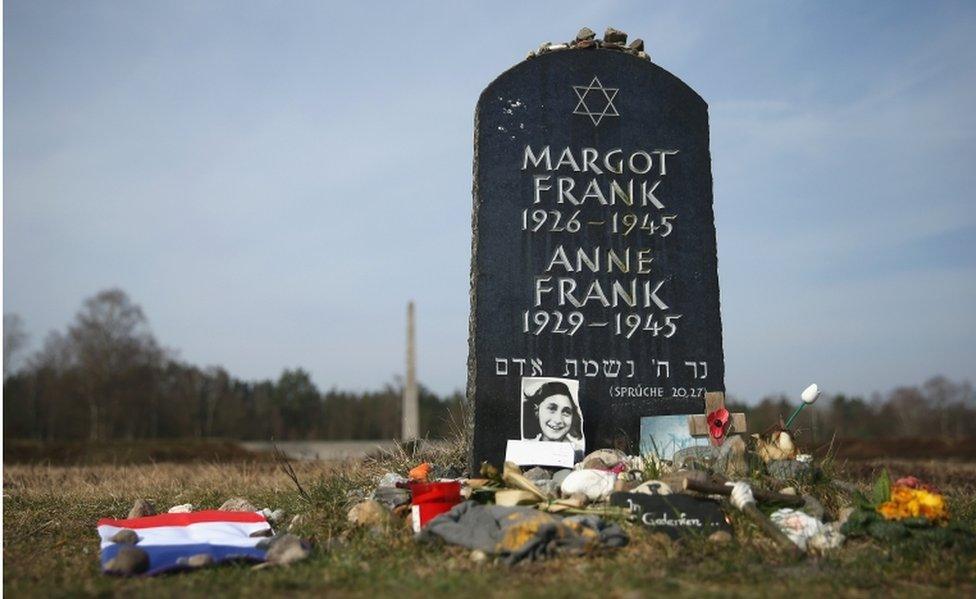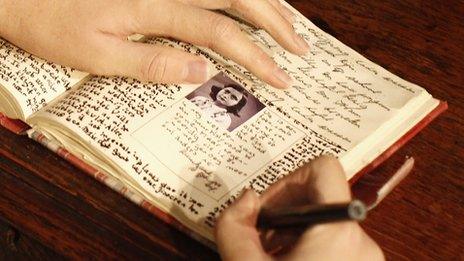Anne Frank may have been discovered by chance, new study says
- Published

Anne Frank's diary has provided new hints about how and why her hiding place was uncovered
World-famous wartime diarist Anne Frank may have been discovered by chance and not because her hiding place was betrayed, a new theory suggests.
The Anne Frank House museum in Amsterdam believes the address could have been raided over ration fraud.
Researchers say the police who found the secret annexe may not have been looking for the eight Jews there.
The raid on Prinsengracht 263 saw all of those in hiding transported to the Auschwitz death camps.
Summarising its findings, the Anne Frank House said, external: "The question has always been: Who betrayed Anne Frank and the others in hiding? This explicit focus on betrayal, however, limits the perspective on the arrest."
Anne Frank poem sells for $148,000
Anne Frank's diary removed from website
Shortly before the raid, an anonymous caller supposedly revealed details of the secret annexe to the Sicherheitsdienst or SD (German Security Service) - but the study's authors have questioned this account.
Using Anne's diary entries from March 1944, researchers found that ration coupon fraud and illegal working activities may have triggered the fateful raid.
'We have no coupons'
From 10 March 1944, Anne repeatedly wrote about the arrest of two men who dealt in illegal ration cards. She called the pair "B" and "D" - which stood for Martin Brouwer and Pieter Daatzelaar.
The pair were salesmen for a firm based at Prinsengracht 263, where Anne's father Otto Frank also had his business - and where the family went into hiding.
Anne writes on March 14: "B and D have been caught, so we have no coupons..."
This shows that the Frank family got at least some of their food coupons clandestinely from these salesmen.

The Anne Frank museum in Amsterdam is located in the house where Anne and her family hid from the Nazis
Analysing police reports and judicial documents, the researchers also found that the police who discovered Anne and her companions were not generally employed to hunt down Jews in hiding.
Instead, they had worked on cases involving cash, securities and jewellery.
The study also notes that the police spent over two hours at the property - longer than it should have taken to arrest those cornered in the annexe.
Other evidence shows that people linked to Prinsengracht 263 had been punished by the Netherlands' Nazi occupiers for evading work.
"A company where people were working illegally and two sales representatives were arrested for dealing in ration coupons obviously ran the risk of attracting the attention of the authorities," the researchers wrote.
No firm conclusions have ever been drawn about who betrayed Anne Frank and her family to the Nazis.
The young writer ultimately died of typhus in the Bergen-Belsen concentration camp, external, aged 15, just weeks before its liberation. Her father Otto was the only one of the annexe's eight occupants to survive World War Two.

A symbolic tombstone commemorates Anne Frank and her sister Margot on the site of the former Bergen-Belsen concentration camp
- Published23 November 2016

- Published15 February 2016
